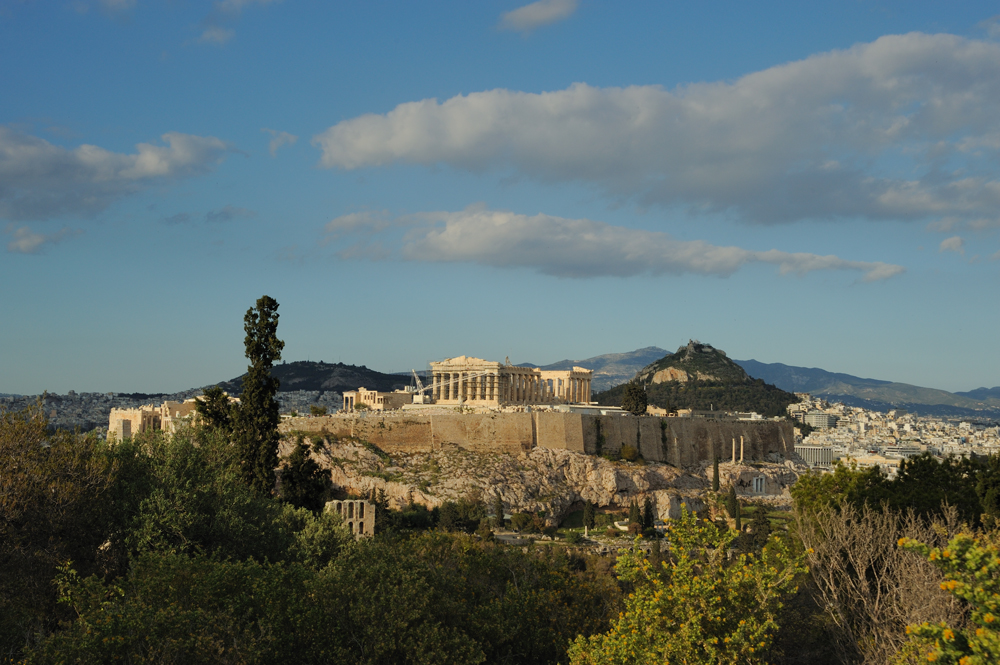
All our settled ancestries knew that it is very convenient to have high hill or commodious rock near the agrarian flats. Such hill or rock is a perfect place for a fortified citadel where you can hide from the enemies and pour boiling tar and other useful stuff on their heads. Such citadels were very popular constructions until bomb-proof shelter’s time. Ancient Greeks also built such citadels and called them acropolis. Athenians were not exception, luckily Athene has plenty of hills. The biggest one was used for the Acropolis of Athens or just The Acropolis.
An acropolis is multi-functional thing. It is not only the fort for protection from enemies. It is also very convenient for a king palace: always above the lieges and, again, good place to hide, if the lieges are disaffected.
Also an acropolis is a good place for god’s temples. People easily can see where to bring beneficence, gods can easily see people.
View on the Acropolis from the Zeus Temple:
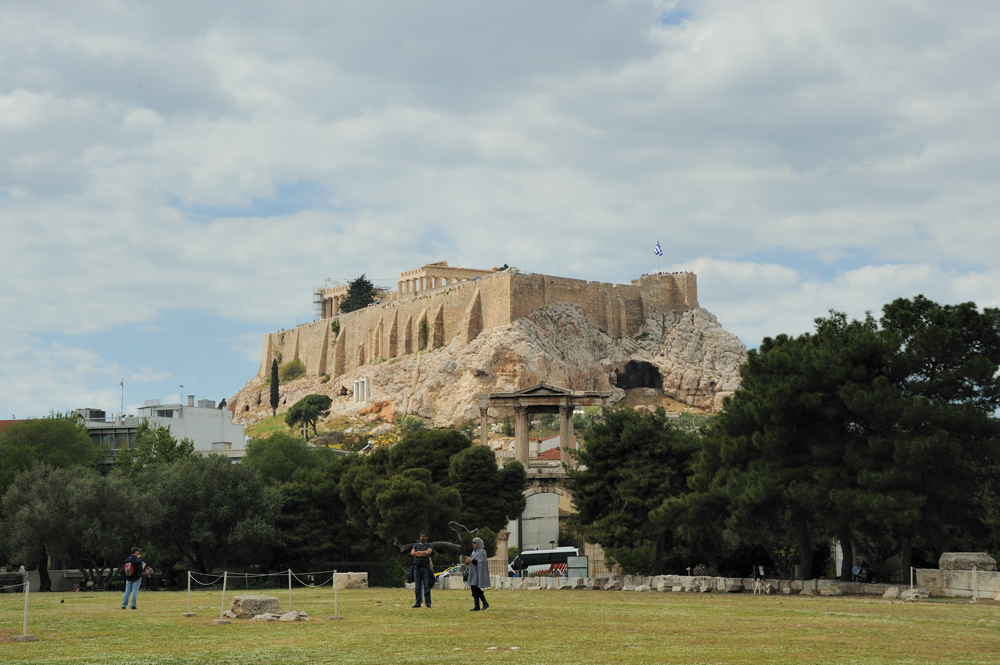
From other perspective:
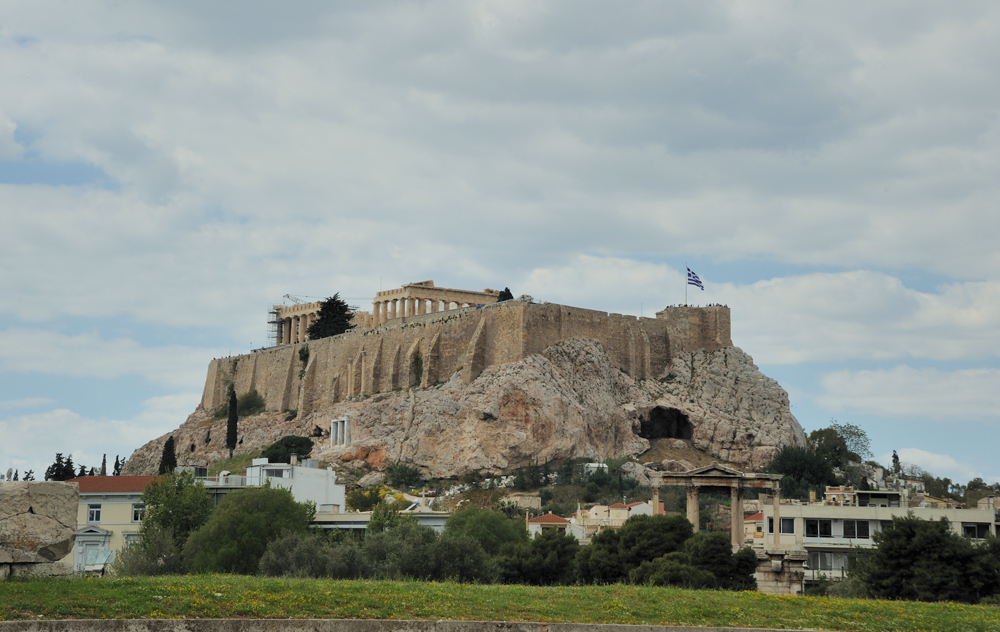
The Acropolis of Athens operated in all possible capacities. The Acropolis together with whole Athena was founded by Cecrops, the first king of Athena, son of Gaia. He also got the patronage for the city from goddess Athena. Actually Athena won the patron title in the competition with Poseidon. They both wanted the new city with whole Attica in a possession, and Cecrops organized the competition – who made a better present for the city will be owned the city. Poseidon created a spring, but because he is the sea god, the spring produced salt water. It was a crappy present, the city has whole Aegean Sea near by. Athena gave the city the olive tree, absolutely useful thing in a household. The whole Greek cuisine is based on an olive oil. Because of semi-god nature of Cecrops and problems with synchronization Time of Legends with Time of History, the exact date of this act is unknown, however, it is known, that time of the Acropolis and Athena foundation is about 7 millennium BC.
All these 9000 years many citadels, temples and palaces were built and destroyed on this hill. Those temples that still tower above the city were built in V century BC after the demolition of the previous ones by Persians during the regular Greek-Persian war. Athenians decided to build a new, even better complex, and Pericles put in charge famous sculptor Phidias. Phidias didn’t screw over.
Last version of the Acropolis towers over Athena about 2500 years, and most of this time people tried to destroy it. Christians, who wanted to erase even memories of the Old Gods started this task, but finally modified the Acropolis into their own church. The initiative were passed to Muslims, who also finally modified it into mosque. The Acropolis was used as a warehouse and an arsenal. It was bombed during wars. Ancient treasure hunters broke pieces from it. Most of its sculptures are demolished, some are taken into English collections (are least thy are not destroyed). However, even the remains are still beautiful and majestic. Athena is impossible without these marble columns above the city.
View of the Acropolis from different neighborhood hills:
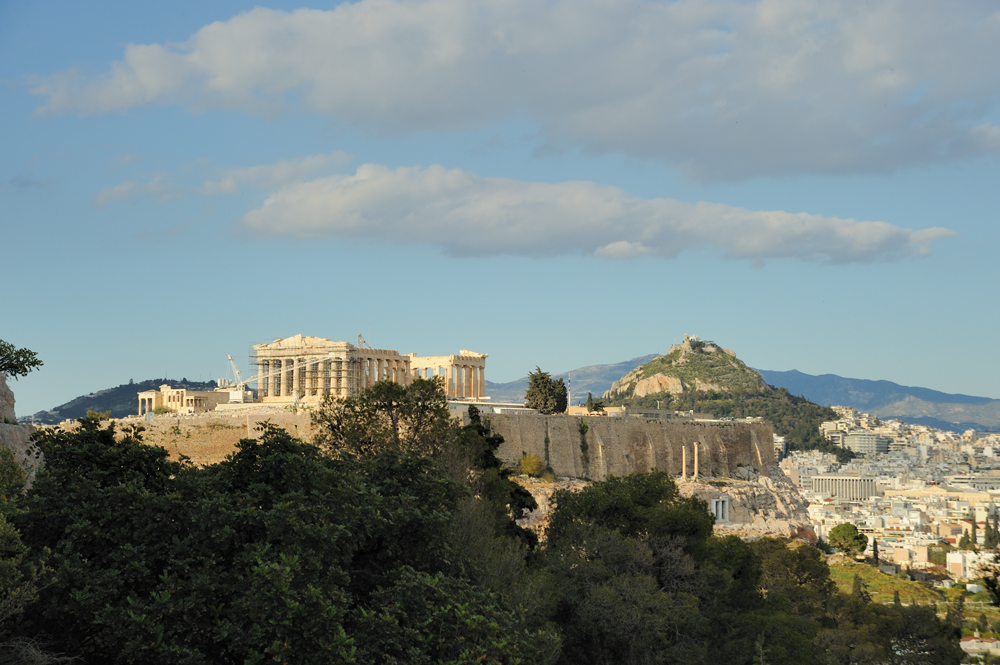
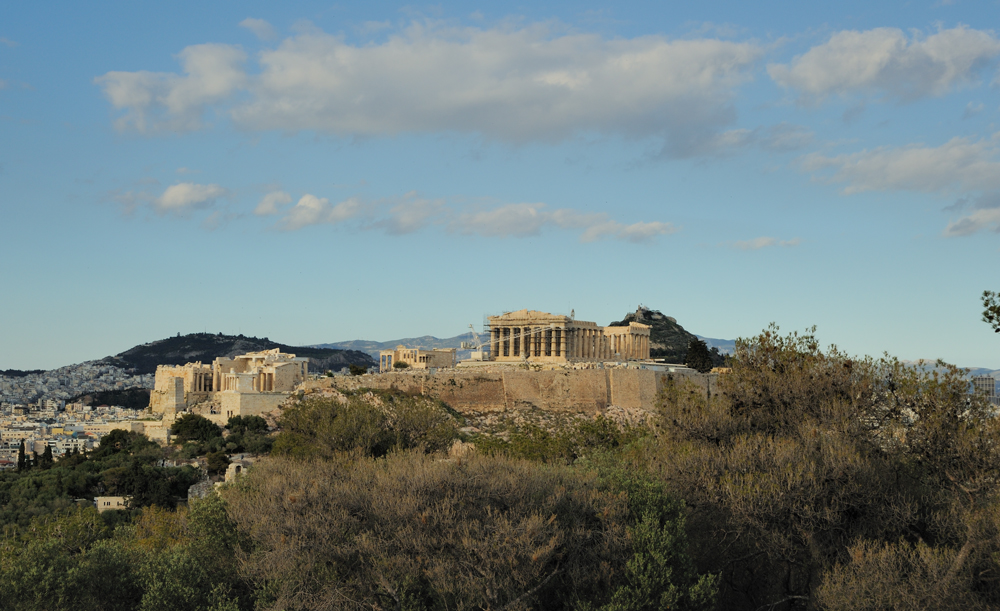
We were instructed to visit the Acropolis at the opening hours, before huge buses with tourists start to arrive. It did work, we spent our time between ancient columns without crowds. I am not sure that it will work on the peak on tourist season.
Road to the Acropolis among olive trees:
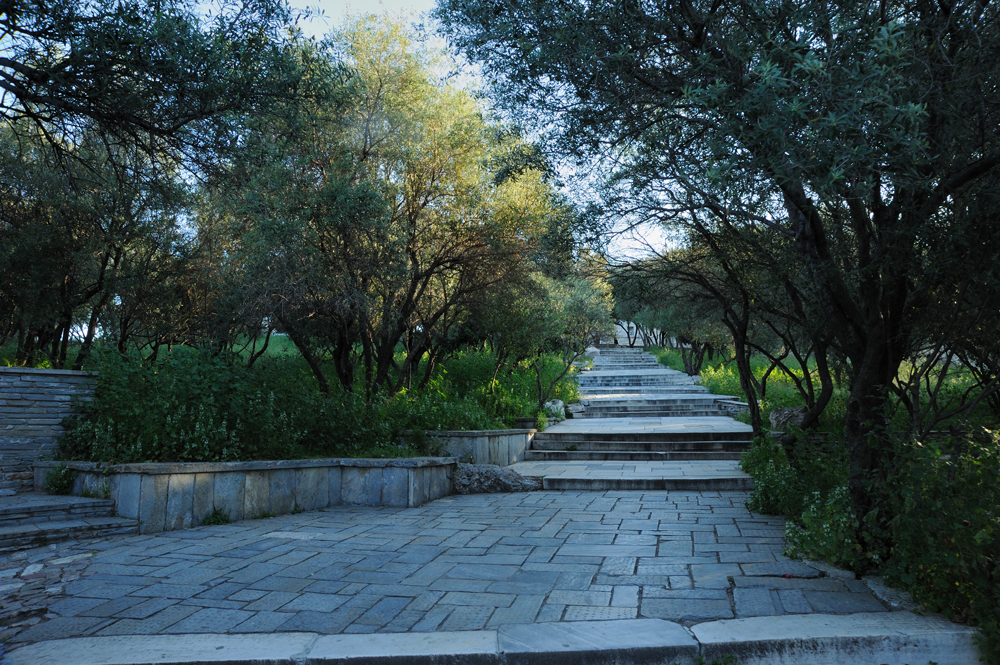
Steps to the temple:
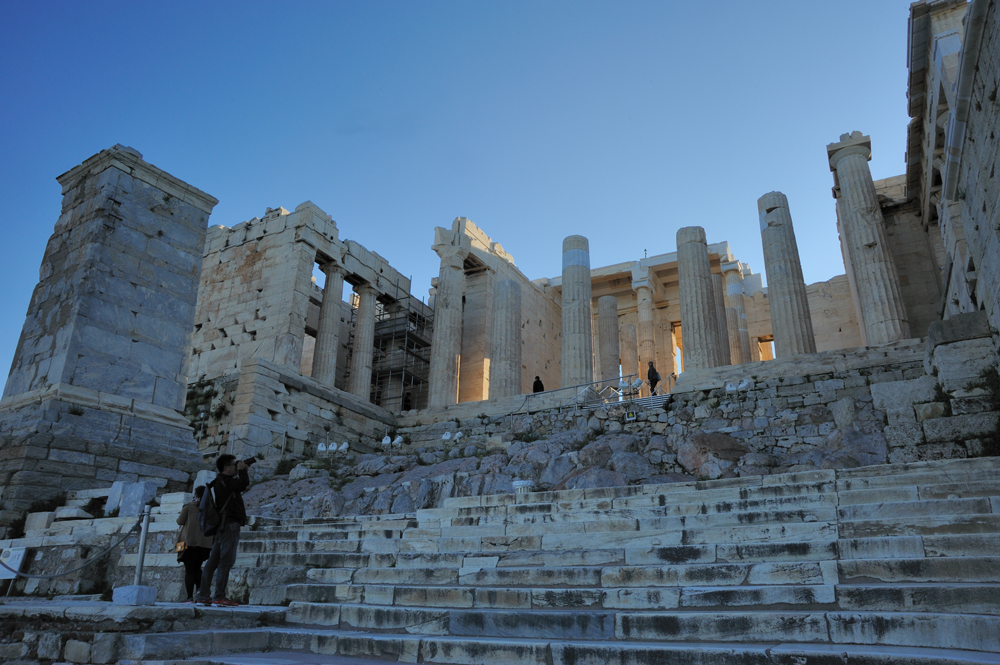

I have no idea what is a purpose of this thing:
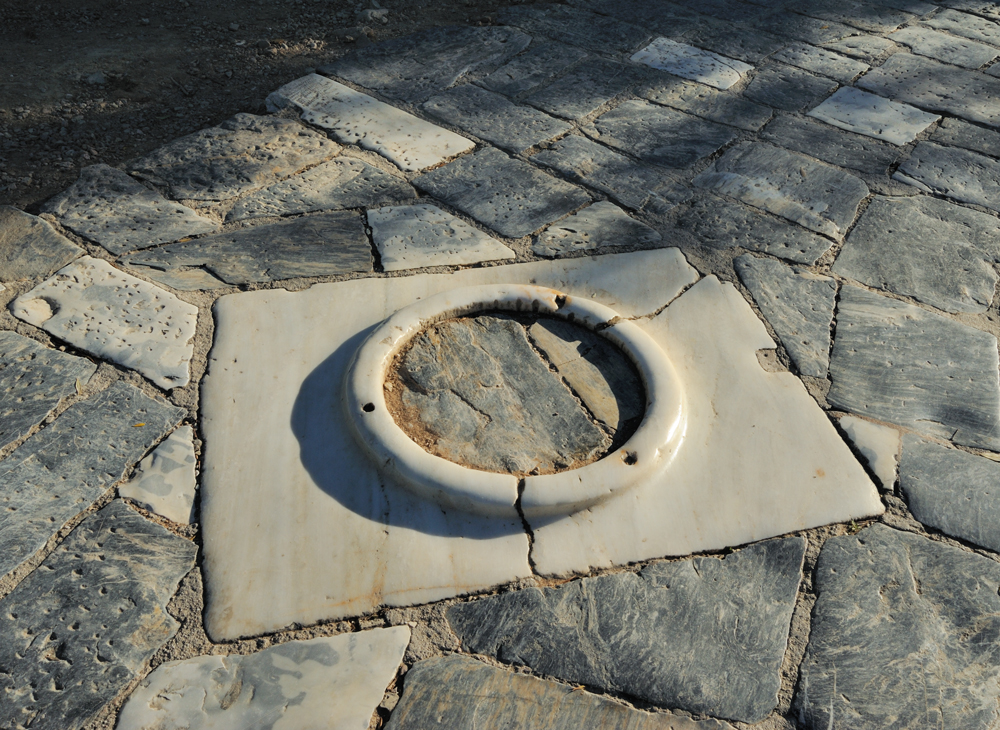
Bright-white inserts are reconstructions of those places that can cause future destruction. It was long discussion about necessary and level of the Acropolis reconstruction. It was decided for now to do only minimal maintenance.
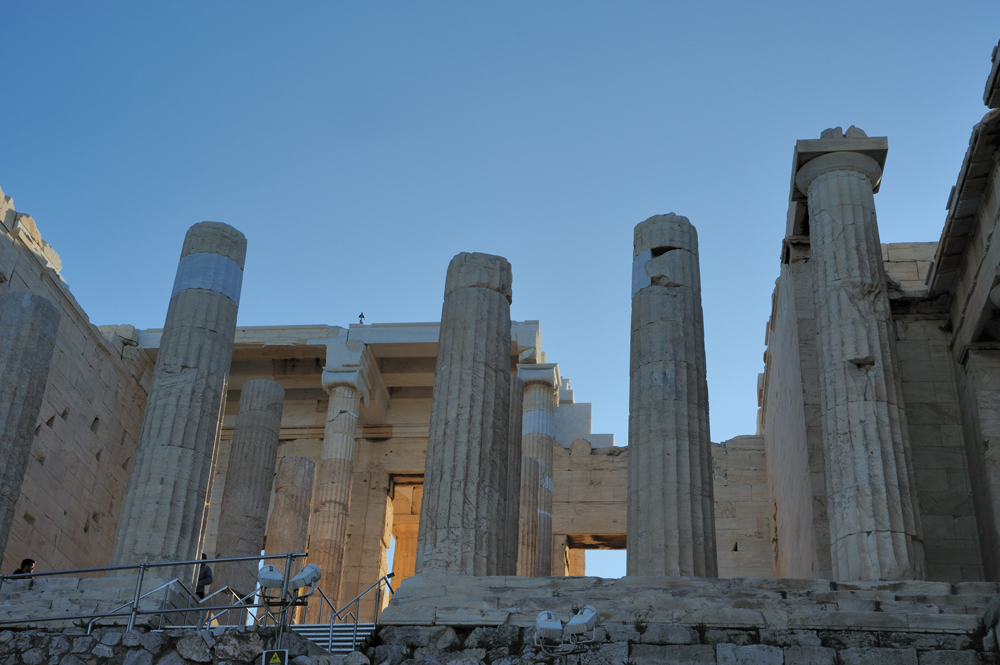
On the photo above is a main entrance to the Acropolis, and on the photo below also.
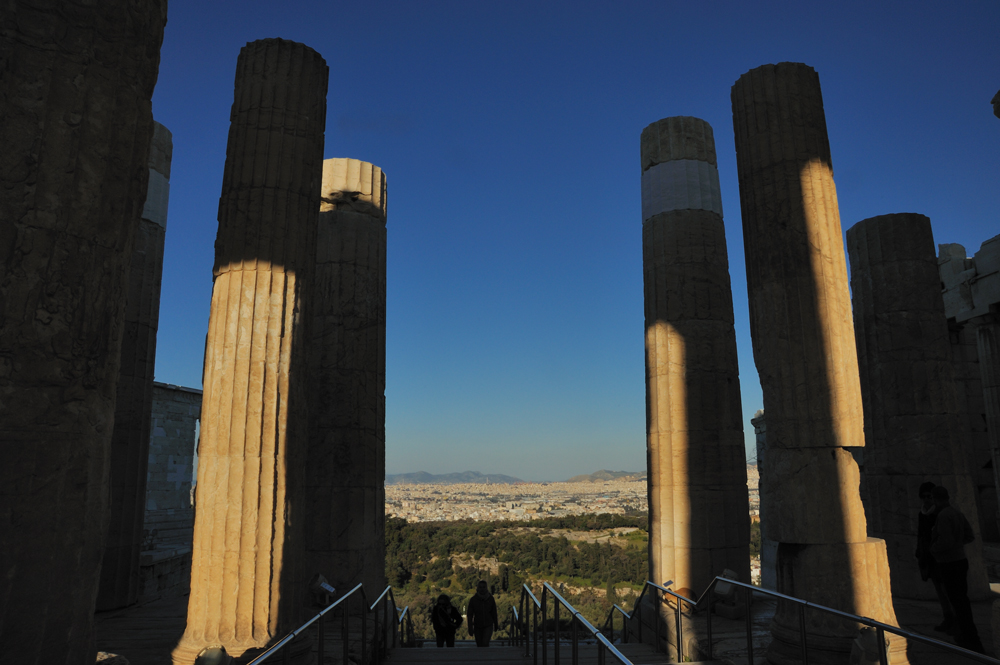
Parthenon, the main temple of goddess Athena
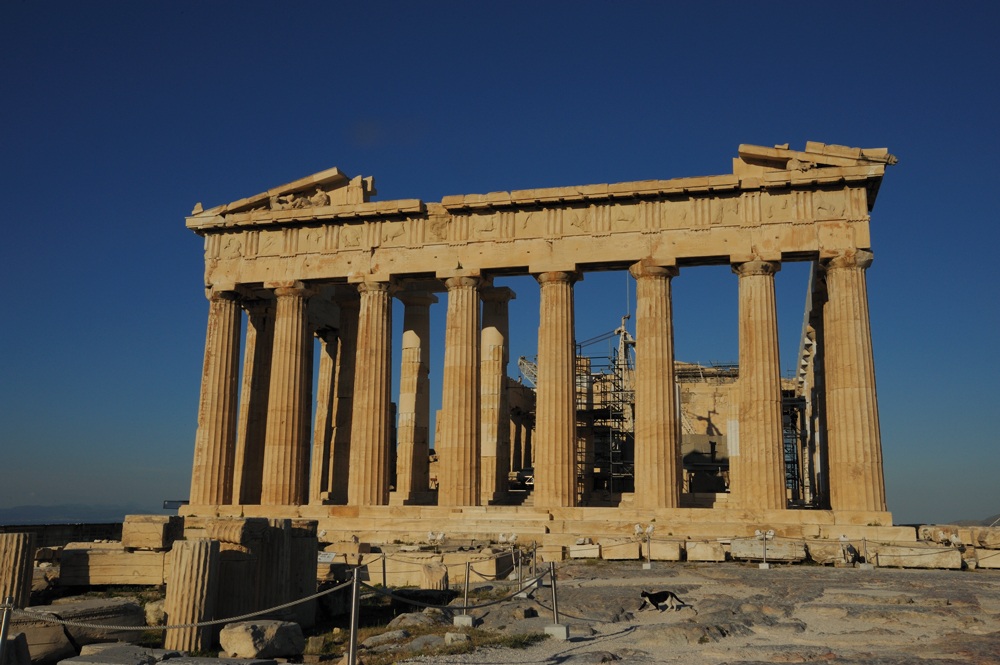
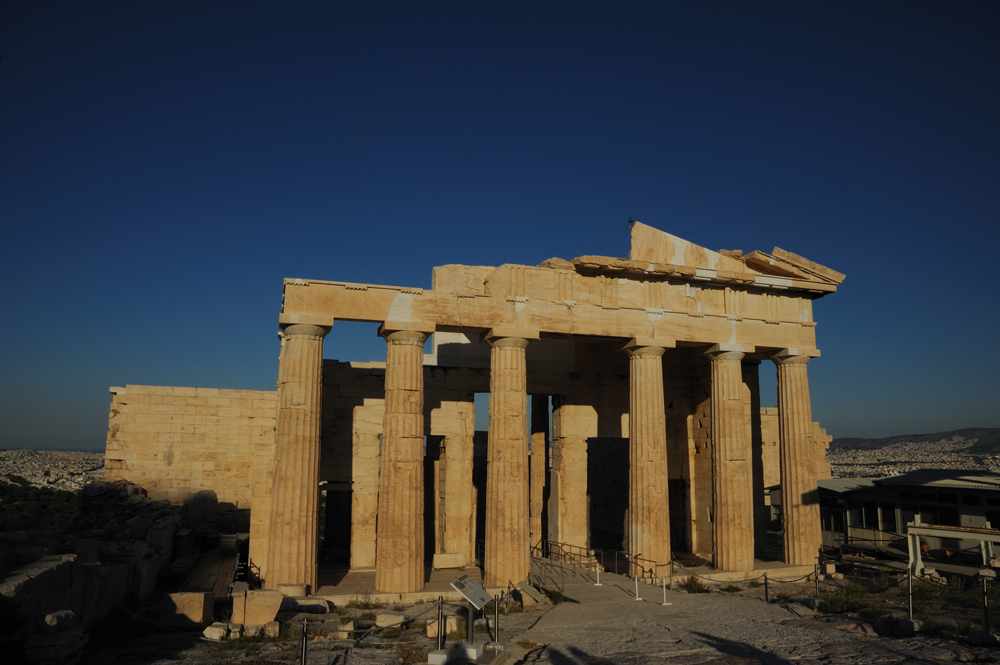
Erechtheum – the temple of Athena and Poseidon. It marks the place where Athena won the competition for the city patronage.
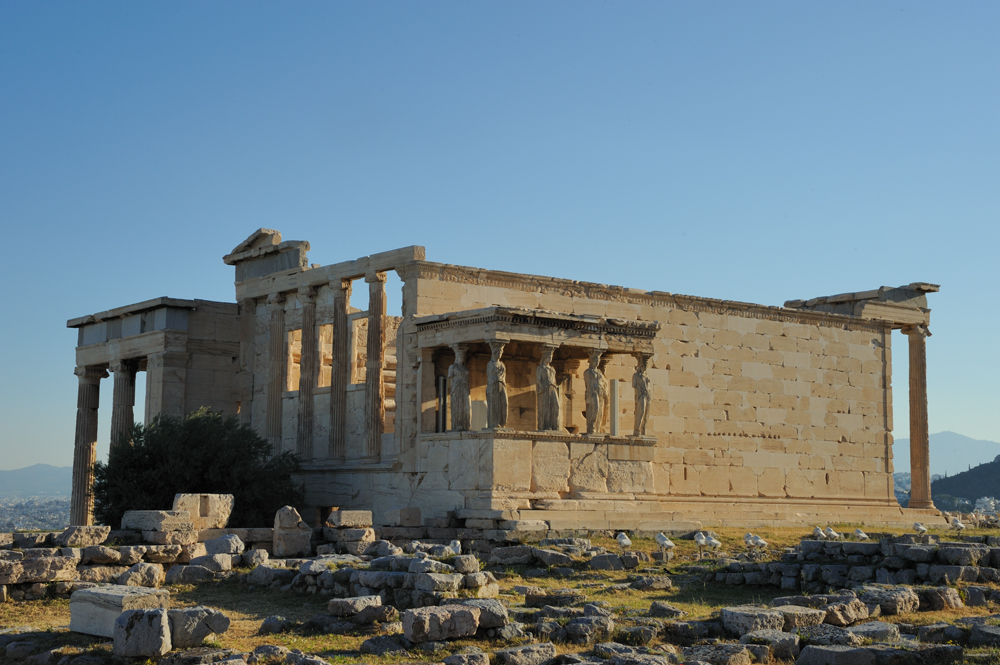
It is only the building of the Acropolis that saved at least part of its statues.
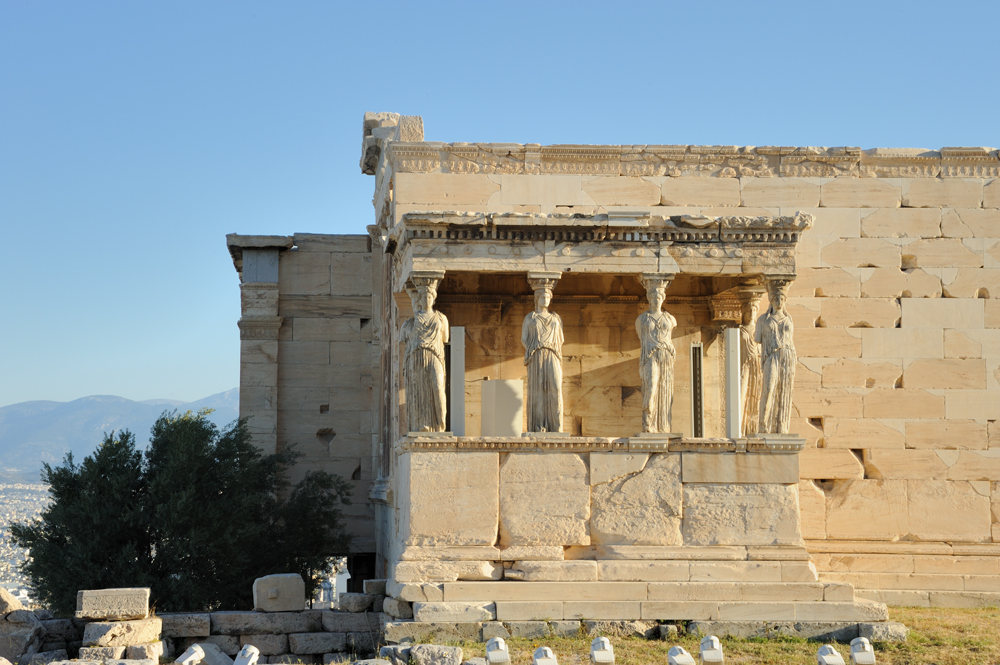
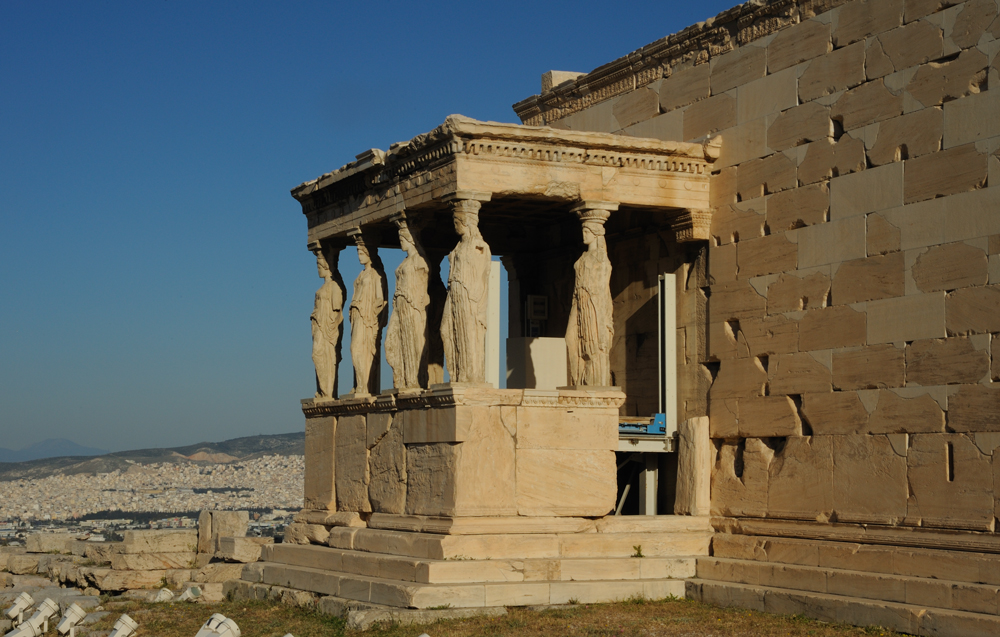
There are plenty of cats in the city and they love ruins.
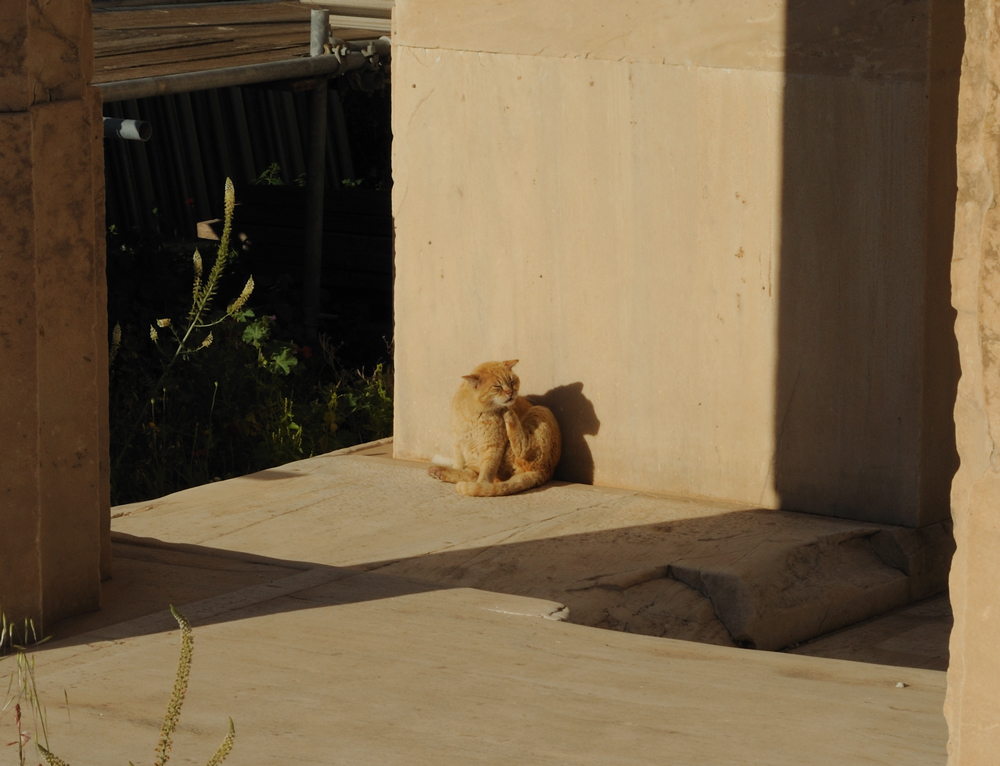
An olive tree near the wall of the Erechtheum. Possibly it is a heir of the Athens’s present to the city.
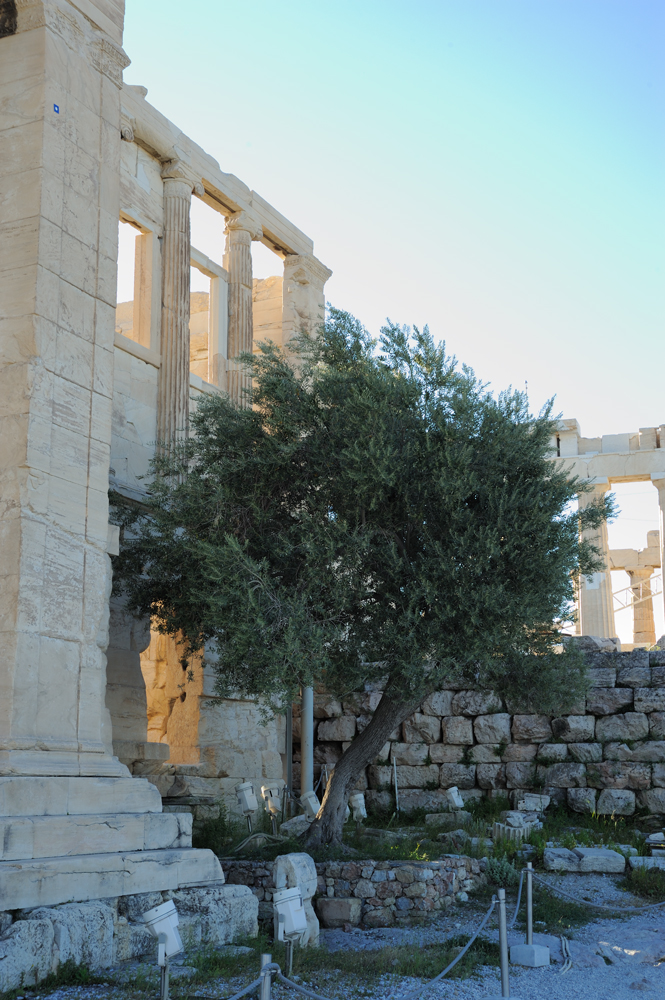
About the sculptures, by the way. In olden times I read a lot about antic cultures. However, in the Acropolis Museum I surprisingly found that Greek painted mostly all their marble sculptures (I mean now classical times). Well, I remember about some elements of painting, but it was news for me that mostly all their sculptures (especially from temples) were completely painted in with several bright mineral dies. Possibly such failure of memory happen because most ancient Greek sculptures in world museums are naked in their marble beauty as a result of dies destruction during all these years. Also we have more Roman copies of Greek sculptures than Greek original, and Romans did their sculptures without painting.
However, part of the Parthenon’s sculptures, that were removed from temple by the militant Christians, were not demolished into the marble bits, but just buried under the ground. When archeologists digged them out they saw original painting. Unfortunately the dyes quickly lost their brightness on the open air, and in this time even colour photography didn’t exist yet to save the exact image. However scientists restored the composition of all used dyes, and in the Museum of Acropolis near some originals you can see painted copies.
By the way, the modern Museum of Acropolis is at the bottom of hill. It is very nice made and interesting place. They also show the film about whole history of Acropolis with all moment of its creation and destruction. Very vivid and worth to see.
It would be very worthy I believe, if some patron provide money to build the copy of the Acropolis (or Parthenon at least) in real size. I meal of course original Acropolis, before all destruction. It should not be made from marble (modern plastic can imitate marble good enough for this porpoise), but if it will be made in all detail and with correct painting, many people will glad to visit it.
Poppies, they are everywhere.
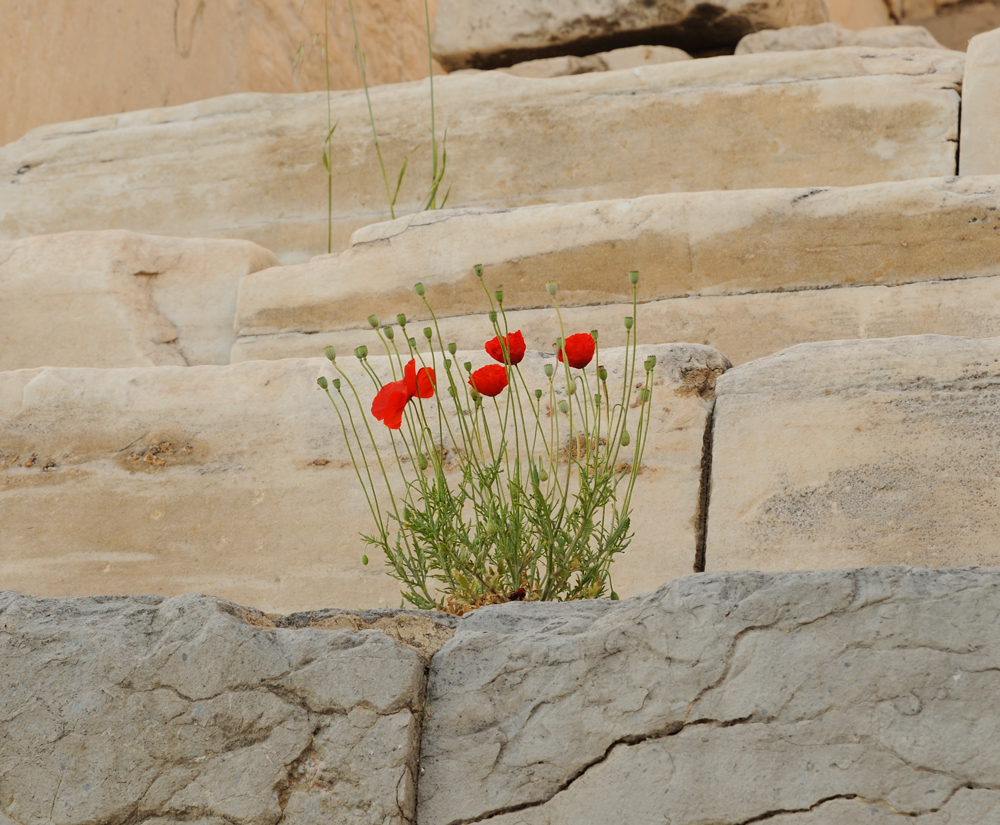
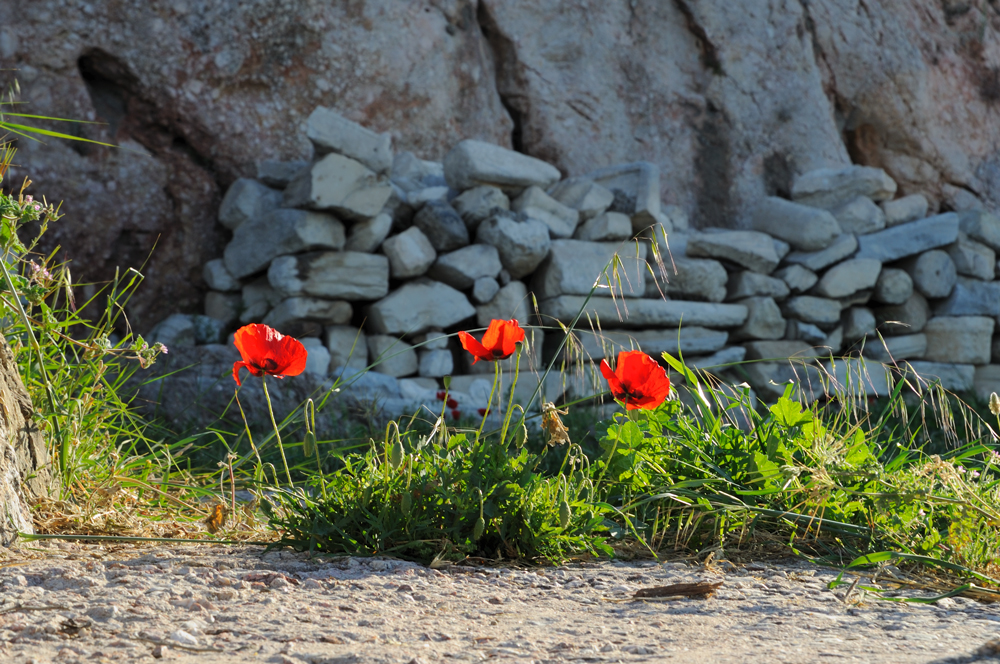
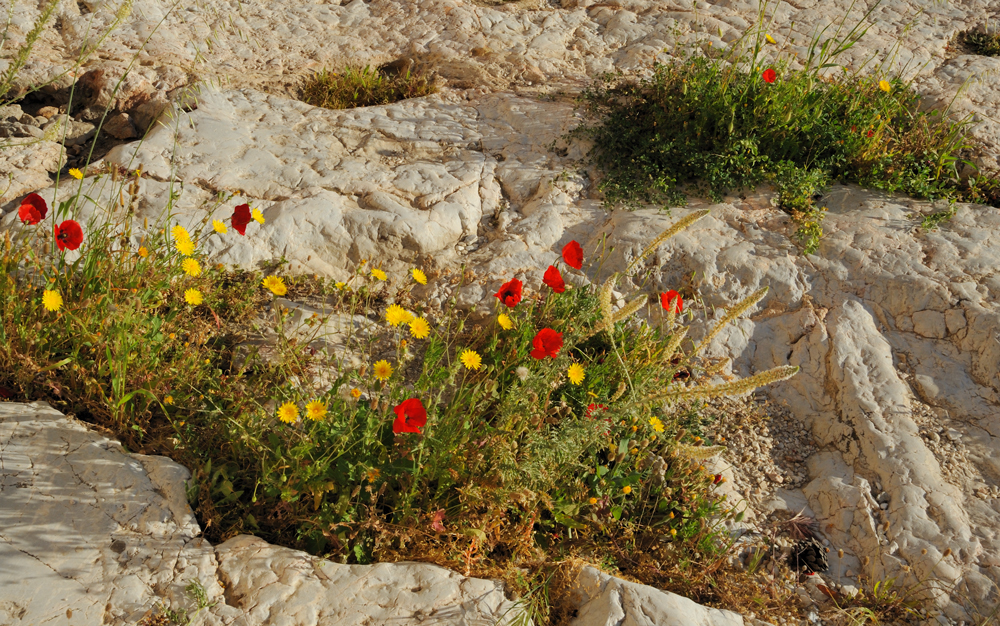
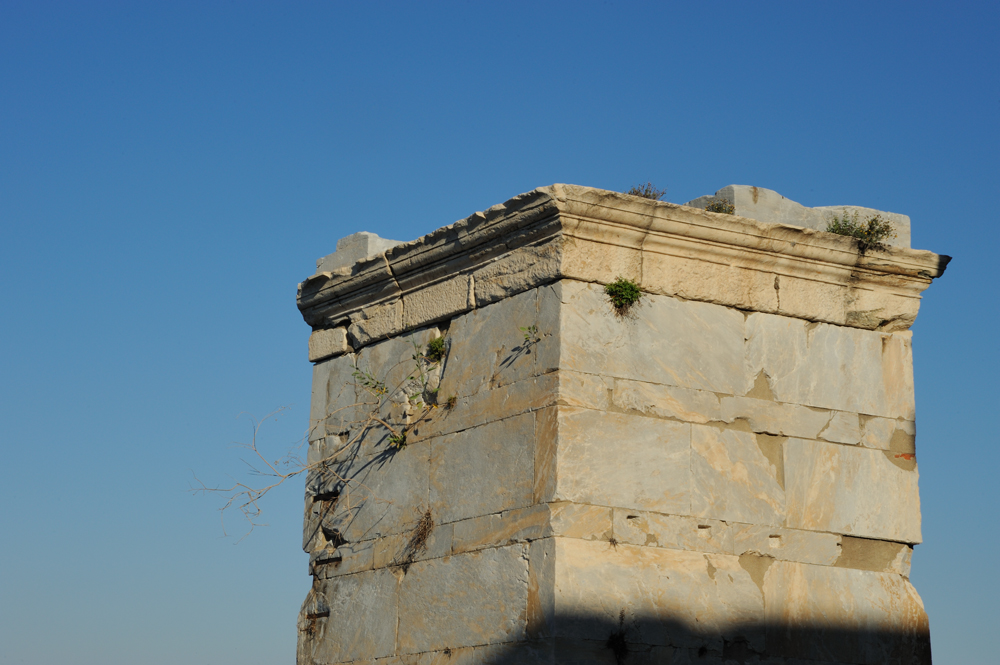
Odeon of Herodes Atticus, who built is in the middle of II century AC.
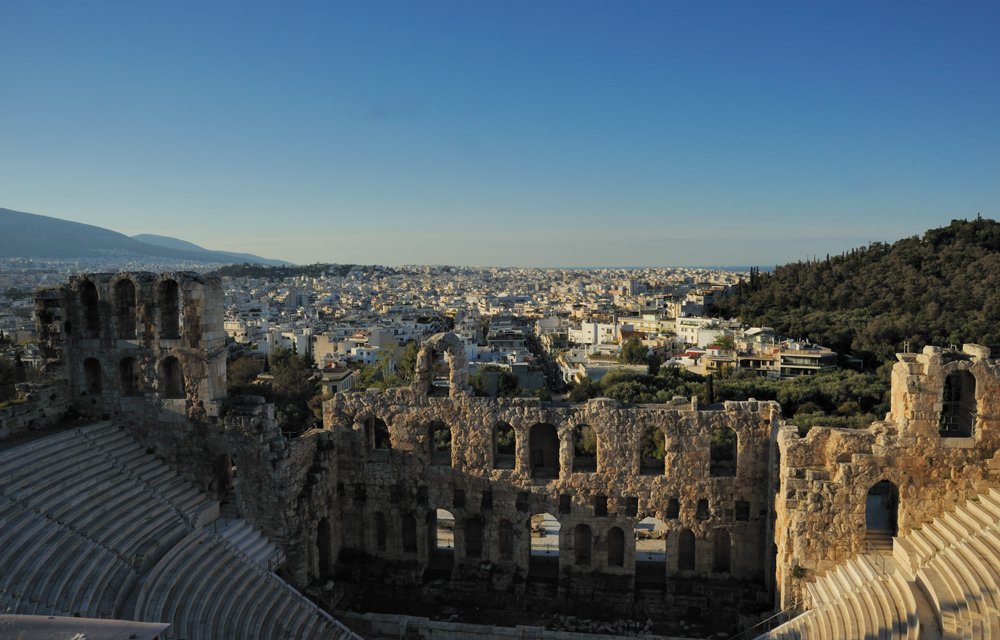
The theater is still functional by the way. The audience stands and the stage were restored in XX century, and the theater is used for concerts from time to time.
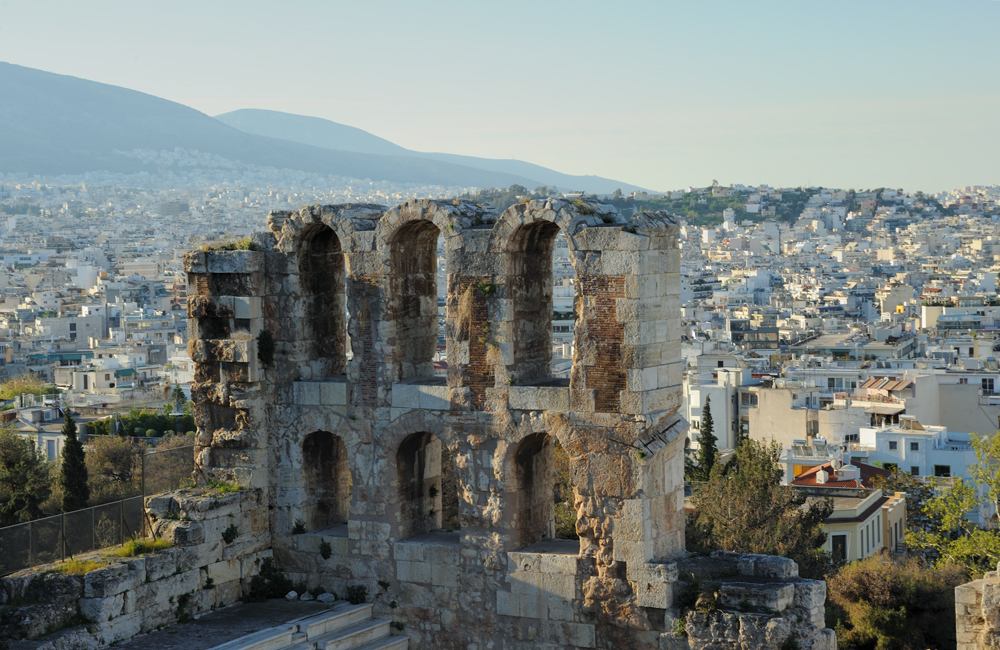
Every morning at 9 am the Greek flag is hoisted above the Acropolis by soldiers. They just done it.
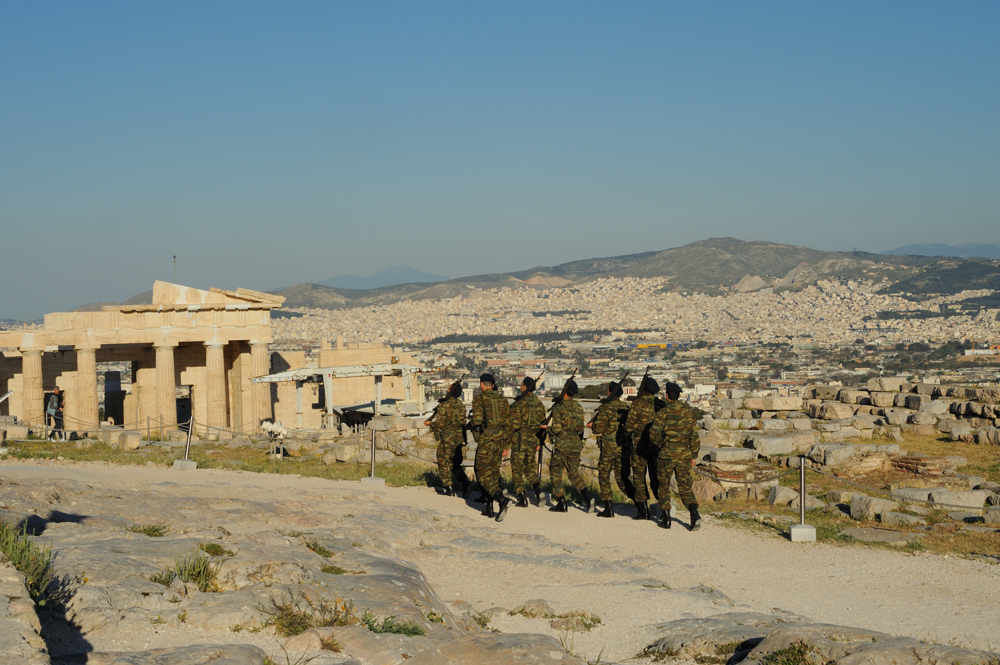
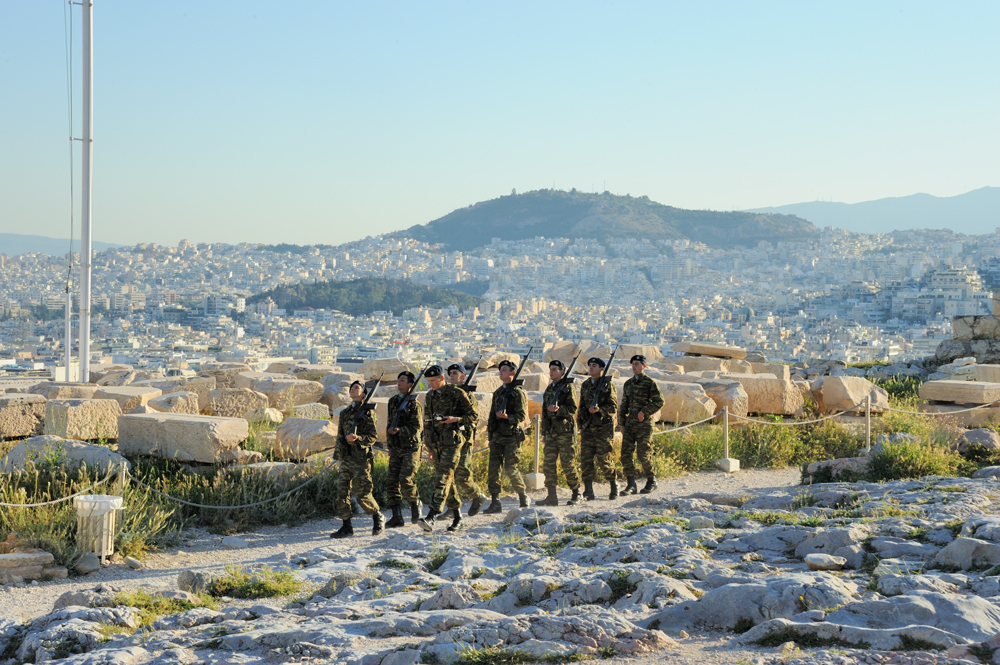
Night views of the Acropolis. The building right above a bluff is the Temple of Athena Nike.
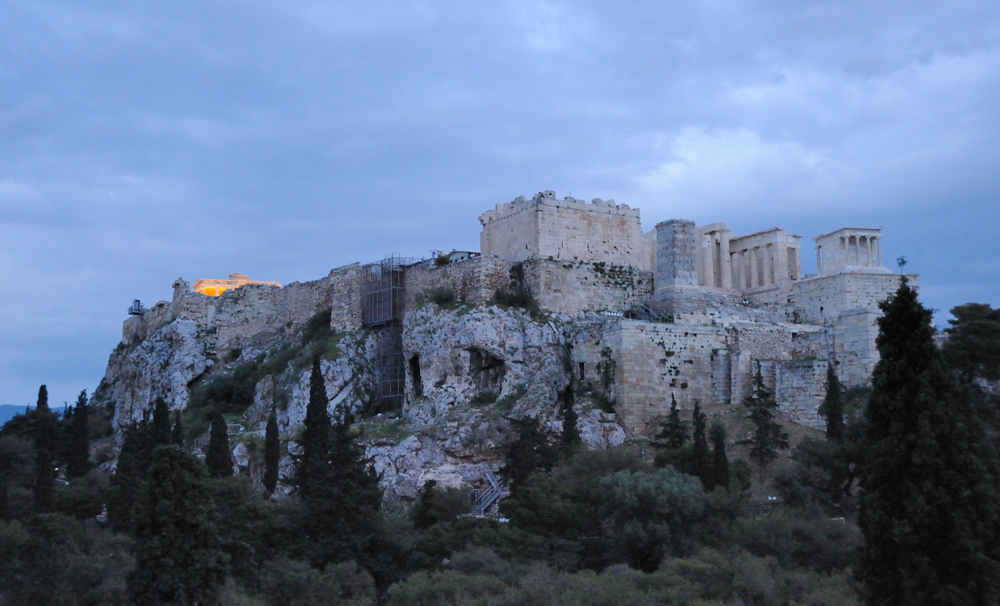
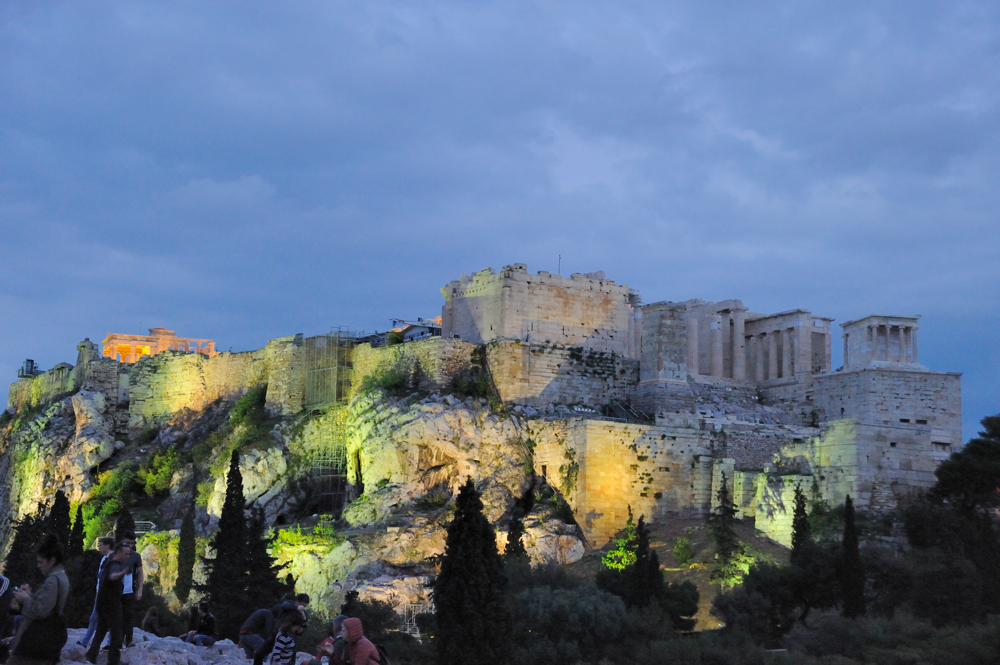
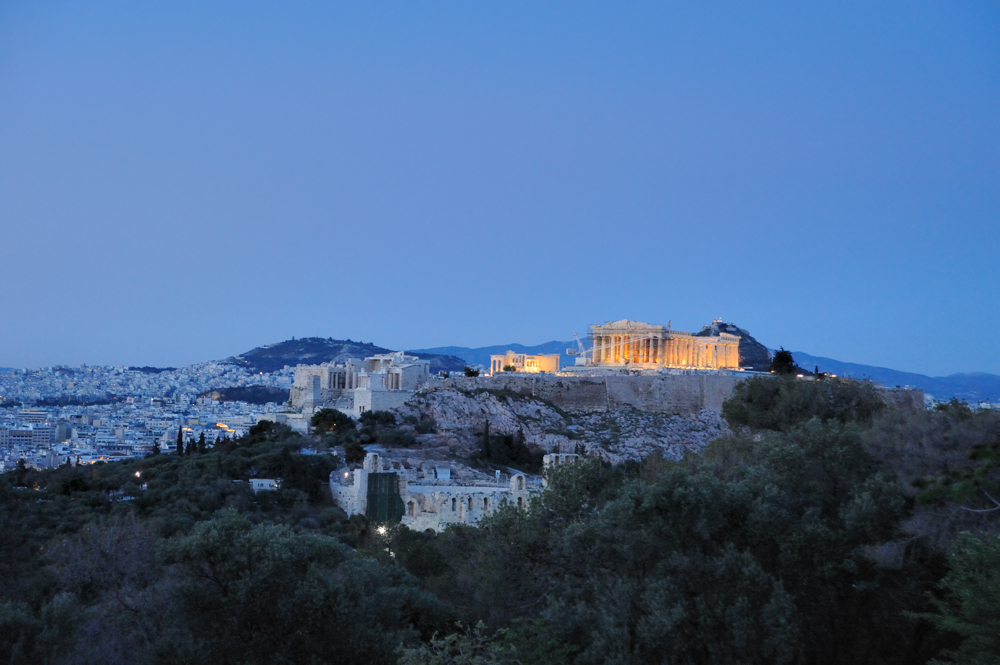
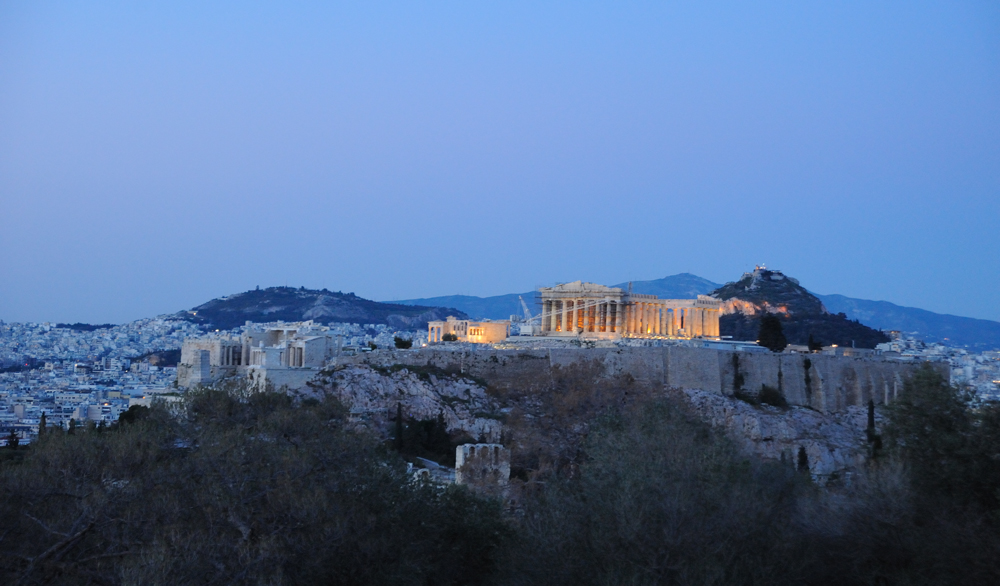
To be continue….